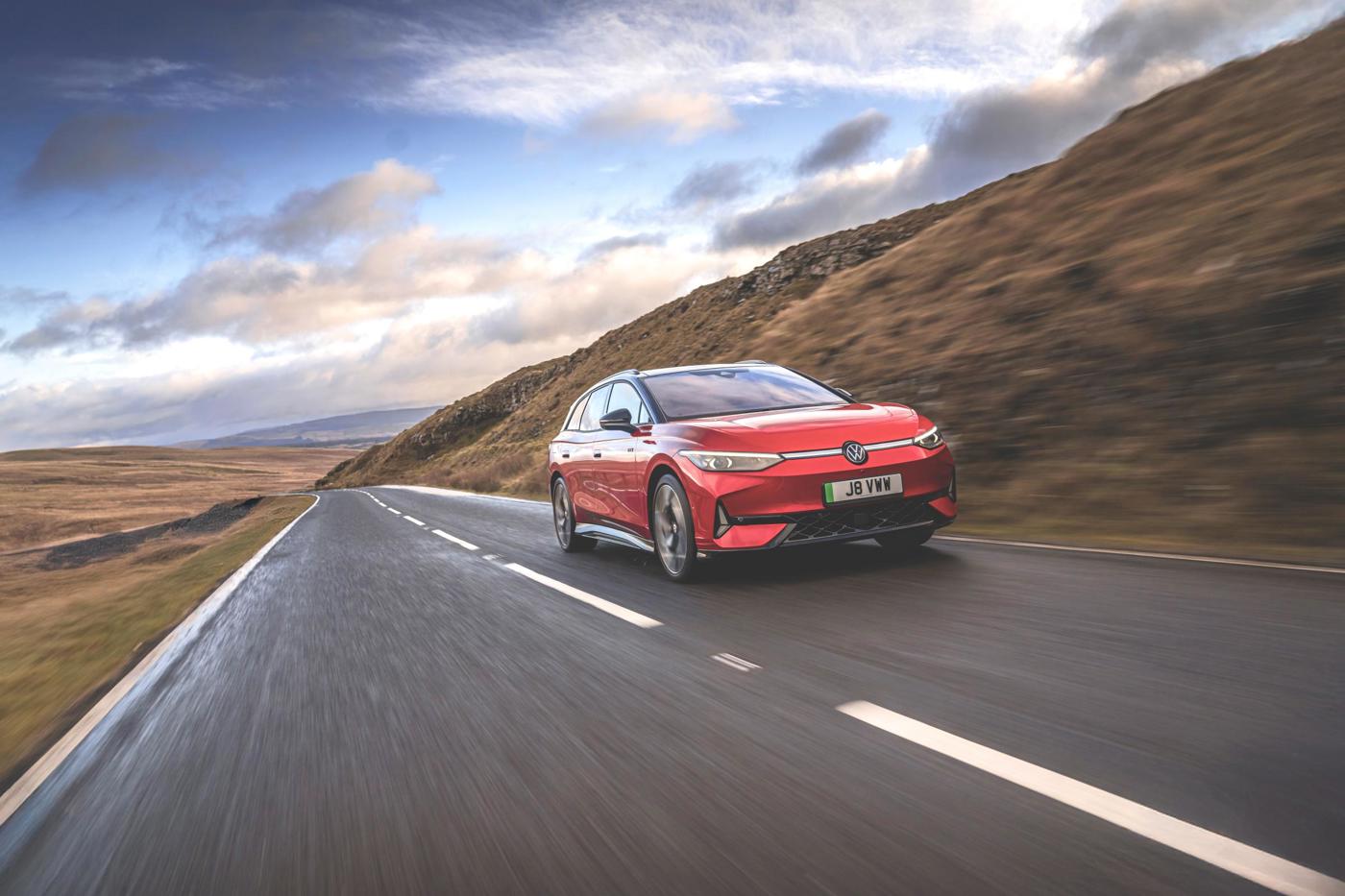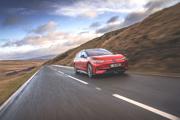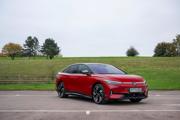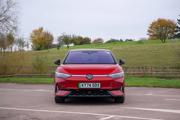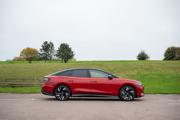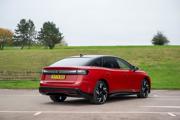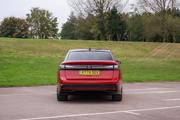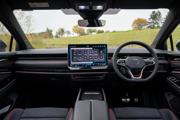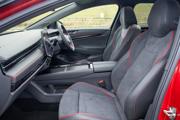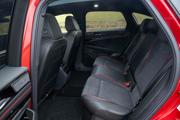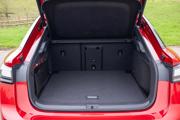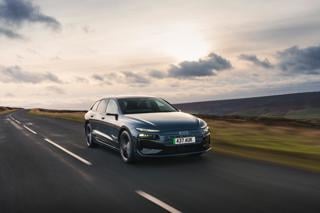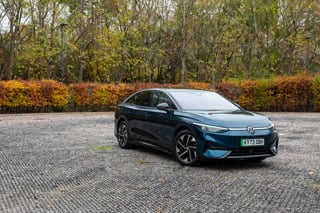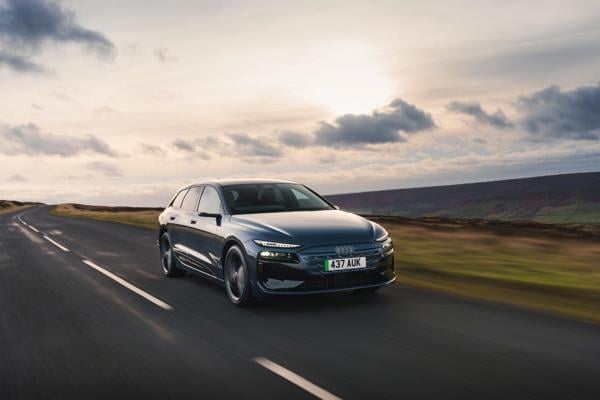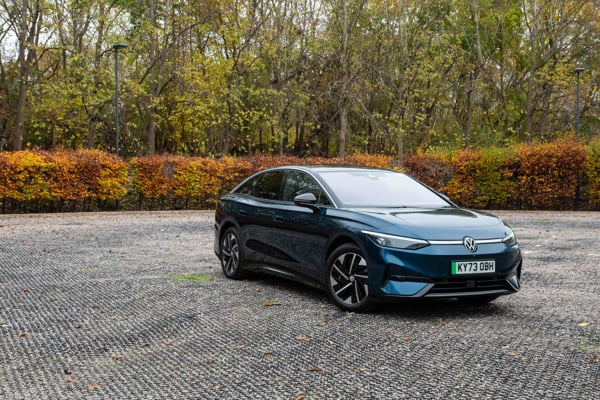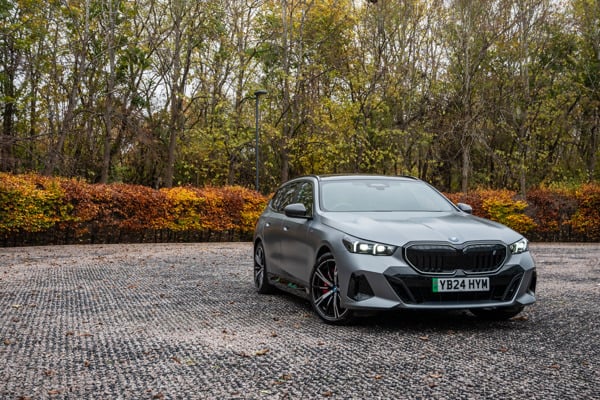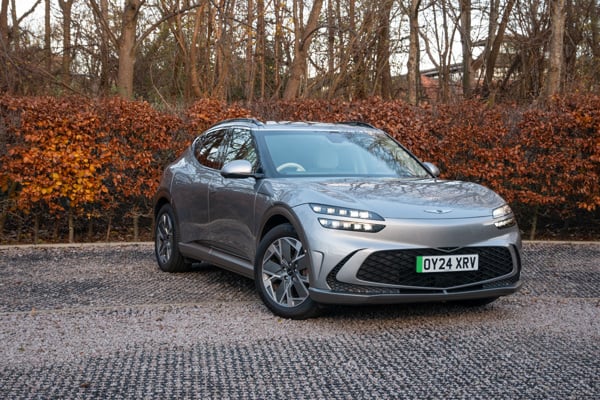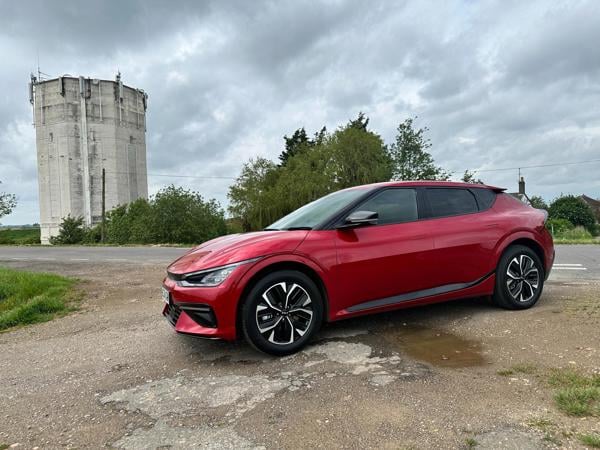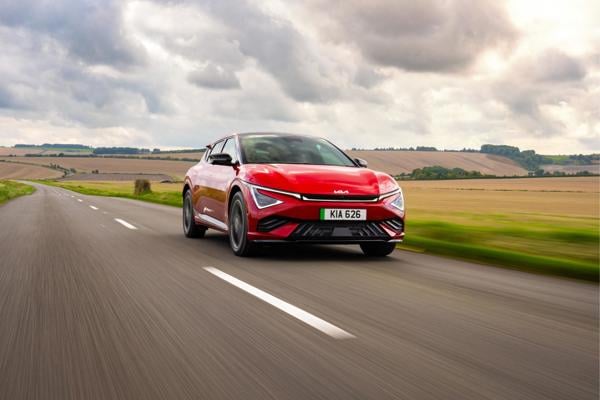Review
The ID7 is an excellent car, well worth considering on a growing list of full electric options. However, we’d opt for the cheaper, longer-range single motor Pro over the dual motor GTX.
Overview
Everything about the Volkswagen ID7 GTX shouts more, more, more – except the range, which is decidedly less when compared to our long-term ID7 Pro, despite accommodating a larger 86kW battery.
The dual motor, all-wheel drive model costs more than the single motor, rear-wheel drive version (£10,000-plus more), it has a more advanced AI-based sat-nav, the head-up screen displays more, the front seats have more options – including massage and cooling – and the car charges more quickly.
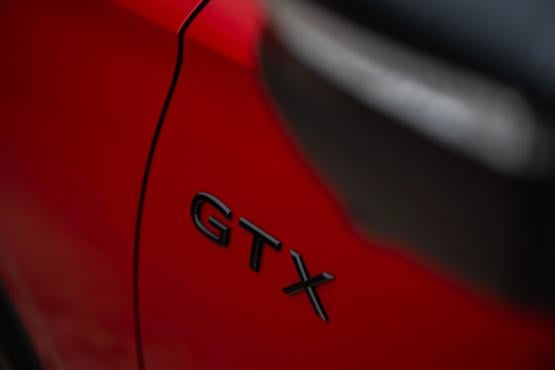
But the WLTP range is 365 miles versus the Pro’s 383 and, under real-world conditions, particularly in the cold, it depletes more rapidly than the single motor variant. OK, so that’s another ‘more’ – but not a desirable one.
So, which would we choose? Read on…
Comfort and practicality
The Volkswagen ID7 is a big car – almost five metres in length (4,961mm) with an unladen weight of 2,328kg, 156kg more than the Pro’s 2,172kg.
A huge boot swallows 532 litres, rising to 1,586 with read seats folded flat – it’s close to estate car capacity in the BEV/PHEV market and easily large enough to accommodate four suitcases. The charging cables are hidden away in a handy compartment under the boot floor.
All five passengers are treated to ample head, elbow and leg room in comfortable seats, although the sculptured outer seats in the back do make the middle a narrower perch.
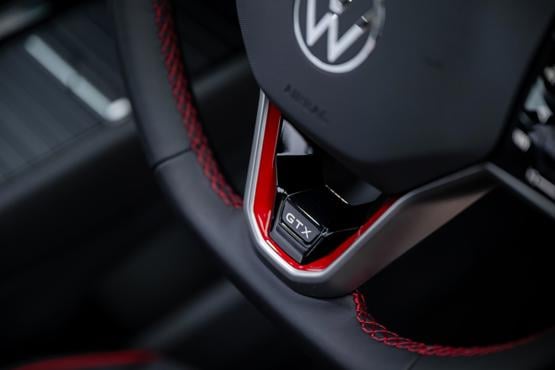
Front passengers enjoy good (four-way adjustable) lumbar support and well-placed, safety-optimised head restraints, plus an extensive list of massage functions, with individual back, lumbar and pelvic choices. Also available are a dry boost setting (to dry damp clothing, apparently) and cool ventilation setting (alongside the usual heated option).
Two things that aren’t the slightest bit practical are the air vents and the electric window switches.
The vents do not have conventional levers or rotating switches to change the airflow direction; instead they use tiny electric motors which are controlled via the climate menu on the touchscreen. It’s neither practical nor convenient.
Likewise, the electric window switches. The ID7 has two - for four windows. A front/rear touchpad allows the driver to toggle between the two. It’s simply not user friendly.
Safety and technology
Euro NCAP five star rated, with a long list of standard safety technology, including fatigue detection, stability and traction control, all the assists - lane/side/traffic/rear traffic/traffic jam/emergency – and front collision warning including swerve support.
Also included is VW Group’s LED Matrix lighting system with dynamic headlight range control, dynamic cornering light and poor weather light.
A 15-inch touchscreen contains the main vehicle commands and is a big improvement over previous Volkswagens.
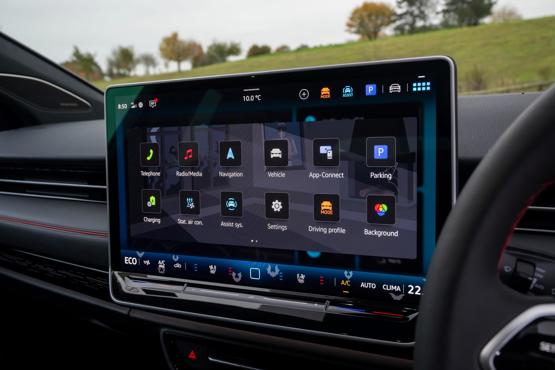
A welcome addition is touch-sensitive buttons to change cabin temperature, which are backlit at night, while a host of other functions can be accessed via steering wheel switches or though the sophisticated voice assistant.
The high-tech head-up display (HUD) contains a wealth of information which means the main instrument binnacle is much smaller because the driver is less likely to need to look at it.
It includes the usual sat-nav instructions but with the addition of augmented reality directional arrows which are projected onto the screen and appear to get closer as you reach the turning. It can become a bit mesmerizing and takes some getting use to. Similar treatment is given to alerts for 50 and 10 miles to destination and a 20% electric charge warning.
Driveability and range
The GTX is the only ID7 to come with Volkswagen’s adaptive dampers (Dynamic Chassis Control) as standard, which lets you choose from 15 suspension settings with a touchscreen slider, from the softest most comfortable ride to the firmest and sportiest (note – not BMW i4 levels of sportiness).
Comfort mode results in an exceptional ride, supple but not soft. It’s just as quiet and refined as the single motor model, making both cars an excellent option for distance driving.
The all-wheel drive, dual motor GTX delivers 340bhp for a sprightly 5.4-second 0-62mph time – a full second quicker than the 286bhp single motor car’s 6.5 seconds.
However, it isn’t significantly more dynamic to drive than its lower powered stablemate, possibly because of the extra few kilos being carried – that said, it does deliver a superior turn of mid-speed acceleration.
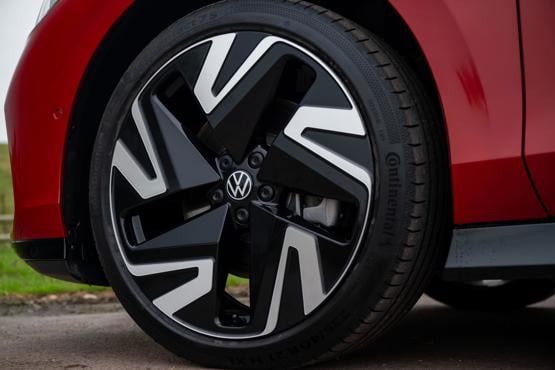
Handling is decent, particularly in sports mode, but you’d be hard pressed to notice much difference in performance in everyday driving.
The 86kWh (net) battery can be charged up to 200kW, 25kW faster than the 77kWh battery in our Pro long-termer.
Essentially, at 26 minutes, this translates to a couple of minutes quicker to charge 10-80%.
Efficiency is where the GTX loses out. At just 3.8mi/kWh and with a WLTP range of 365 miles, it falls well short of the Pro’s 4.7mi/kWh, which enables the single motor, rear-wheel drive model to achieve a combined test figure of 383 miles.
Neither car has the tightest turning circle, but they are easy enough to navigate around town despite the near-five metres length.
Company car tax and running costs
Extra power comes at a cost – more than £10,000 in fact. The GTX P11D is £61,995, compared to the Pro’s £51,525.
Both zero emission models sit in the same 2% tax bracket for BIK (2024/25), with the GTX’s higher price resulting in a monthly tax bill of £41 for a 40% taxpayer, slightly higher than the Pro, at £34.
Running cost, according to the Fleet News calculator powered by Cap HPI, is 60.76ppm for the GTX over four years/80,000 miles resulting in cycle costs of £48,608. The Pro, in contrast, will cost £40,248 thanks to a 50.31ppm running cost.
Specs
| Manufacturer | Volkswagen |
| Model | Id.7 Hatchback |
| Specification | Volkswagen Id.7 Hatchback 250kW 4MOTION GTX 86kWh 5dr Auto |
| Model Year | 2024.00 |
| Annual VED (Road tax) | £0 |
| BIK List Price | £61,955 |
| Range | 366.00mile(s) |
| CO2 | N/A |
| BIK Percentage | 2% |
| Insurance Group | N/A |
| CC | 1 |
| Fuel Type | Electric |
| Vehicle Type | Large car |
| Luggage capacity (Seats up) | 532litres |
| Doors | 5 |
Running Costs
| P11D | £61,955 |
| Cost per mile | 69.73ppm |
| Residual value | £24,425 |
| Insurance group | N/A |
| Fuel Type | Electric |
| Cost per mile | 238.48ppm |
| Fuel | 2.37ppm |
| Depreciation | 233.85ppm |
| Service maintenance and repair | 2.26ppm |
Rivals
Info at a glance
-
P11D Price
£61,955
-
MPG
N/A (WLTP) -
CO2 Emissions
N/A -
BIK %
2% -
Running cost
3 Year 60k : £24,425 4 Year 80k : £19,450 -
Fuel Type
Electric -
Range
366.00mile(s)



